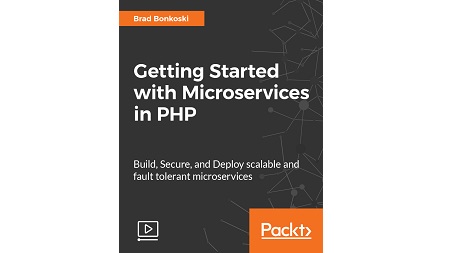
English | MP4 | AVC 1920×1080 | AAC 44KHz 2ch | 2h 07m | 501 MB
Build your own microservices in PHP
Microservices (aka the microservice architecture) is an architectural style that structures an application as a collection of loosely coupled services. The microservice architecture enables the continuous delivery/deployment of large, complex applications and enables faster, better delivery of value to implement business capabilities, thus enabling an organization to evolve its technology stack. It enables organizations to scale their products and add or adapt services efficiently. Companies can deliver software faster and more efficiently in order to compete in the dynamic markets of today and tomorrow, while at the same time keeping their products fast, secure, and stable. Lately, microservices have gained far more attention due to their use as the architecture pattern of choice at companies such as Google, Facebook, Twitter, Netflix and many more prominent technology companies and startups.
The course starts with the basics of microservices and helps you understand the important tools required to develop and validate them. Moving ahead, we will set up and create the right environment before we start building your microservice. The 2nd section is all about testing and will teach you to publish containers. The videos cover Docker and Vagrant. Finally, towards the end, you will learn to deploy and monitor your published microservice.
What You Will Learn
- Understand the microservice design pattern
- Develop you first microservices and their benefits over other architectural approaches.
- Learn to set up a development environment for microservices
- Use Docker and Vagrant for better portability and faster onboarding.
- Deploy and monitor your microservices
Table of Contents
01 The Course Overview
02 A Microservice Based Project
03 Tools to Build Microservices
04 Developing Our First Microservice
05 Validating Our Mircroservices
06 Setup of Jenkins
07 Unit, Integration, and Spec-Based Testing
08 Writing and Running Tests
09 Producing a Deployable Artifact
10 Integration Test and Publishing Your Container
11 Load Testing
12 Deploying and Monitoring Microservices
13 Aggregating Your Logs
Resolve the captcha to access the links!